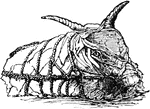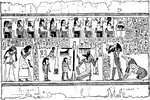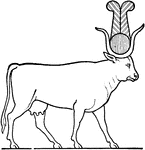Egyptian Religion
The Egyptian Religion ClipArt gallery offers 45 illustrations of icons, Gods, and Goddesses in Egyptian religion. The Egyptians were polytheistic, meaning they worshipped multiple deities. Illustrations include Amun, Anubis, Apis, Isis, Osiris, Ra, Thoth and others.
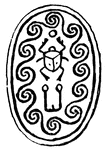
Amulet
The scaraboeus or beetle appears isolated on mummy-cases and elsewhere, as a symbol of creation and…
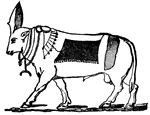
Apis
A bull to which divine honors were paid by the ancient Egyptians, who regarded him as a symbol of Osiris.
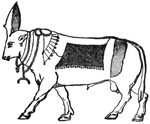
Apis
The sacred bull, worshipped with divine honors by the ancient Egyptians, who regarded it as a symbol…
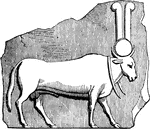
Apis
"The bull worshipped by the ancient Egyptians, who regarded it as a symbol of Osiris, the god of the…
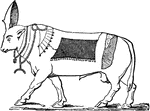
The Bull Apis
Also known as Hapis. In mythology, Apis was a commonly worshipped bull-deity in the Memphis region.

Egyptian God, Typhon
Typhon was he wife of Anubis, God of Darkness. Typhon is also known as the Terrible One.

Judgment of the Dead
An illustration of an Egyptian hieroglyphic depicting the judgment of the dead. "An ape-assessor scourages…

The Judgment of the Dead
"Showing the weighing of the heart of the deceased in the scales of truth."—Myers, 1904

mummy
"Mummy. Another striking religious custom was the embalming of the dead. It was thought that the soul…
Mummy
The bodies of those who were buried in the pyramids were preserved from decay by a secret process, known…

Osiris
"Osiris was worshipped as the god of the sun, the source of warmth, life, and fruitfulness, in addition…

Egyptian scarabs
The ancient Egyptians regarded the scarab as a symbol of immortality. 1. Stone scarab with wings, 2.…

Serapis
"Serapis or Hermes is sometimes represented as identical with Osiris, and sometimes as a distinct divinity,…




